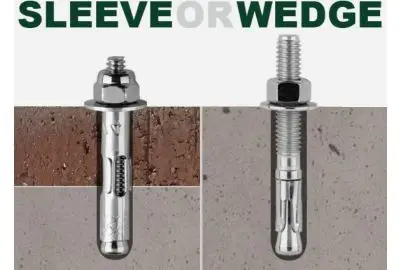ASTM Hex Nut Manufacturers for Reliable and High-Quality Fasteners Solutions
វិច្ឆិកា . 06, 2024 13:46 Back to list
ASTM Hex Nut Manufacturers for Reliable and High-Quality Fasteners Solutions
Understanding ASTM Hex Nut Standards and Their Importance in the Industry
Hex nuts play a critical role in various sectors, including construction, manufacturing, and automotive industries. The American Society for Testing and Materials (ASTM) has established specific standards for hex nuts, which define their dimensions, materials, and mechanical properties. This article seeks to explore the significance of ASTM hex nut standards and the implications for manufacturers, suppliers, and end-users.
What is ASTM?
The American Society for Testing and Materials (ASTM) is an international standards organization that develops and publishes voluntary consensus technical standards for a wide range of materials, products, systems, and services. Founded in 1898, ASTM standards are recognized and used worldwide to ensure quality and safety. These standards cover everything from metals and plastics to aeronautics and construction, making them essential for maintaining industry integrity.
The Importance of Hex Nuts
Hex nuts are fasteners that are hexagonal in shape and predominantly used alongside bolts to secure objects together. They are commonly found in machinery, structural applications, and various equipment. The reliability and performance of hex nuts are crucial, as they must withstand various loads, environmental conditions, and operational stresses.
ASTM Standards for Hex Nuts
The ASTM specifies several standards applicable to hex nuts, including ASTM A194, ASTM A563, ASTM F594, and ASTM F836. Each of these standards addresses different aspects of nut production and performance
1. ASTM A194 This standard covers carbon and alloy steel nuts used with bolts for high-pressure and high-temperature service. It provides detailed specifications for material quality, mechanical properties, and testing methods to ensure durability and reliability.
2. ASTM A563 This specification offers requirements for nuts made from carbon steel and certain alloy steels. It outlines the mechanical properties, including yield strength and hardness, guaranteeing that the nuts will perform effectively under different conditions.
astm hex nut company

3. ASTM F594 This standard relates to stainless steel nuts and includes specifications for various grades of stainless steel, mechanical properties, and tests to ensure corrosion resistance and strength integrity.
4. ASTM F836 This specification focuses on the requirements for heavy hex nuts used in structural applications. The standard ensures that these nuts meet specific construction needs, providing assurance to engineers and builders about their reliability for load-bearing applications.
Benefits of Using ASTM Standard Hex Nuts
1. Quality Assurance Manufacturers and suppliers who adhere to ASTM standards guarantee the quality and durability of their hex nuts. This commitment to quality fosters trust among users, ensuring that they can rely on these fasteners for critical applications.
2. Interchangeability ASTM standards allow for interchangeability between products from different manufacturers. This flexibility is especially important in industries that rely on timely repairs and maintenance.
3. Regulatory Compliance Many industries are subject to strict regulations that require compliance with recognized standards. By using ASTM-compliant hex nuts, companies can avoid potential legal issues and maintain their operational legitimacy.
4. Enhanced Safety The reliability of fasteners is crucial for ensuring the safety of structures and machinery. ASTM standards help prevent failures that could lead to accidents, protecting both workers and end-users.
Conclusion
In summary, ASTM hex nut standards are vital for maintaining quality and safety across various industries. These standards ensure that hex nuts meet specified mechanical properties and performance criteria, providing manufacturers and end-users with essential guidelines. As industries continue to evolve, adherence to such standards will remain critical for innovation and safety. The commitment to quality, compliance, and performance encapsulated in ASTM standards helps build a foundation of trust in the materials used across different sectors, ultimately contributing to economic stability and progress. Therefore, businesses should prioritize the use of ASTM-compliant hex nuts, ensuring their operations are as reliable and efficient as possible.
Latest news
-
High-Quality Panel Stud Bolt Reliable Panel Stud Bolt Factory & Suppliers
NewsJul.08,2025
-
High-Precision Fine Thread Locknuts Manufacturer & Supplier Custom Solutions
NewsJul.08,2025
-
PH Imperial Stud Bolt – High Strength Fasteners from Leading Supplier & Factory
NewsJul.07,2025
-
High-Quality Allen Wrench Bolts Leading Factory, Company & Suppliers
NewsJul.07,2025
-
Wholesale Ball Stud Bolt - High Quality Supplier & Factory Price Reliable Wholesale Ball Stud Bolt Company
NewsJul.06,2025
-
High-Strength Alloy Bolts Manufacturer & Supplier Quality Alloy Fasteners Factory
NewsJul.06,2025
